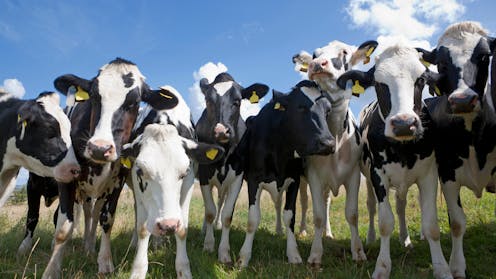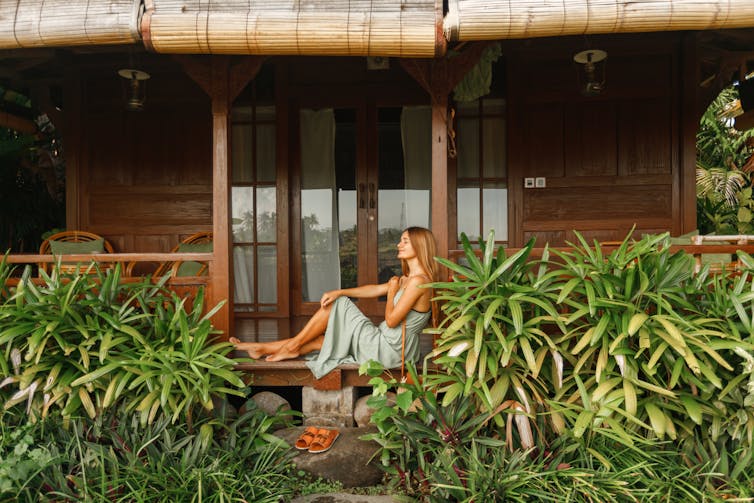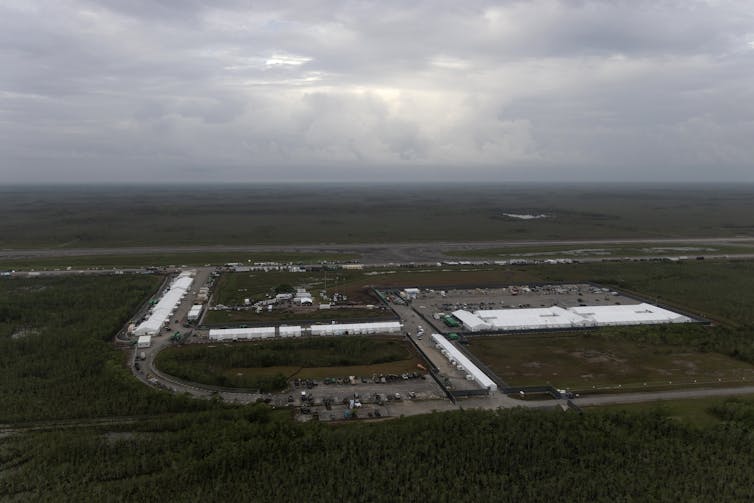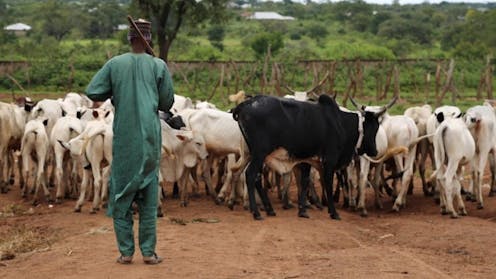Source: The Conversation – UK – By Cate Williams, Knowledge Exchange Fellow at Institute of Biological, Environmental and Rural Sciences, Aberystwyth University

A tiny midge, no bigger than a pinhead, is bringing UK farming to its knees. The culprit? A strain of the bluetongue virus that’s never been seen before.
As of July 1, the whole of England has been classed as an “infected area” due to bluetongue virus serotype 3 (BTV-3).
There are movement restrictions and testing in place in Scotland, Wales and the island of Ireland. No animals from England – or that have passed through England – are allowed to attend this year’s Royal Welsh Show on July 21-24, for example.
Get your news from actual experts, straight to your inbox. Sign up to our daily newsletter to receive all The Conversation UK’s latest coverage of news and research, from politics and business to the arts and sciences.
The virus, which causes illness and death in sheep, cattle, goats and other ruminants, is spread by biting midges. Although it poses no risk to humans and can’t be transmitted from one animal to another, the latest outbreak is more severe than previous ones. And it could cause lasting damage to UK farming.
Bluetongue isn’t new to the UK, however. A different strain, BTV-8 was detected in 2007 and contained. But BTV-3 is a different story. First detected in the Netherlands in late 2023, it was quickly spotted in the UK, where an early containment effort initially appeared successful.
But the virus made a comeback in autumn 2024 – and this time it spread. On its second attempt, the virus was able to circulate and caused an outbreak. With little existing immunity, BTV-3 has now established itself, prompting concerns about animal welfare, food production and farming livelihoods.
What does the disease do?
Sheep tend to be the most severely affected, though all ruminants are at risk. Clinical signs are species-specific but can include swelling of the face, congestion, nasal discharge, ulcers in the mouth and nose, difficulty breathing and abortion or birth deformities.
Bluetongue can cause the animal’s tongue to swell. It can also turn blue from lack of blood flow – although this is somewhat rare.
Bluetongue disease causes suffering in animals, and while there is a vaccine, there is no treatment for the disease once it’s contracted.
BTV-3 appears to be more lethal than earlier strains. In the Netherlands, vets report that BTV-3 is causing more severe symptoms than BTV-8 did.
Vets in England reported that in some herds 25-40% of cows failed to get pregnant, and there was a high rate of birth defects and stillborn calves. One farm in Suffolk started the calving season with 25% of their cows not pregnant and ended with just 48 calves from 97 cows.
Belgium has seen a fall in calf births, reduced milk deliveries and higher mortality in small ruminants compared to the previous three years.
How is it spread?
Bluetongue virus is transmitted by midges from the Culicoides genus. These are tiny, biting insects that thrive in mild, wet conditions.
Multiple midges can bite the same animal, and it only takes one of them to carry BTV before that animal becomes a host for further transmission. When animals are transported long distances, infected individuals can be bitten again and introduce the virus to previously uninfected midge populations.
Climate change is making outbreaks like this more likely. Milder winters and cooler, wetter summers are ideal for midges, increasing both their numbers and their biting activity.
While there’s no danger to human health, the consequences of BTV-3 are far-reaching. Limitations on movement, exports and imports are being imposed to help prevent the spread of the disease, but this could also hamper farming practices and trade.
The disease and its associated restrictions pose another source of stress for farmers, 95% of whom have ranked mental health as the biggest hidden problem in farming.
Genetic pick and mix
One of the reasons bluetongue is so tricky to manage is its ability to evolve. It has a segmented genome, meaning its genetic material, in this case RNA, is split into ten segments. This characteristic is exclusive to “reassortment viruses” and means that they can easily exchange segments of RNA. It’s like a genetic pick and mix with ten different types of sweets that come in an unlimited number of flavours.
This allows BTV to create new, genetically distinct “serotypes”, which may have a selective advantage or a disadvantage. Those with an advantage will emerge and spread successfully, while those with a disadvantage will not emerge at all. This process, known as “reassortment”, is partly responsible for the numerous influenza pandemics throughout history and has even allowed diseases to jump the species barrier.
Although bluetongue doesn’t affect humans directly, its spread poses a growing threat to the UK’s livestock sector and food supply. It’s important to learn from other countries that are further along in the BTV-3 outbreak so that the likely effects can be anticipated in the UK.
![]()
Cate Williams does not work for, consult, own shares in or receive funding from any company or organisation that would benefit from this article, and has disclosed no relevant affiliations beyond their academic appointment.
– ref. Bluetongue outbreak endangers UK livestock – what you need to know about the virus – https://theconversation.com/bluetongue-outbreak-endangers-uk-livestock-what-you-need-to-know-about-the-virus-260229



















